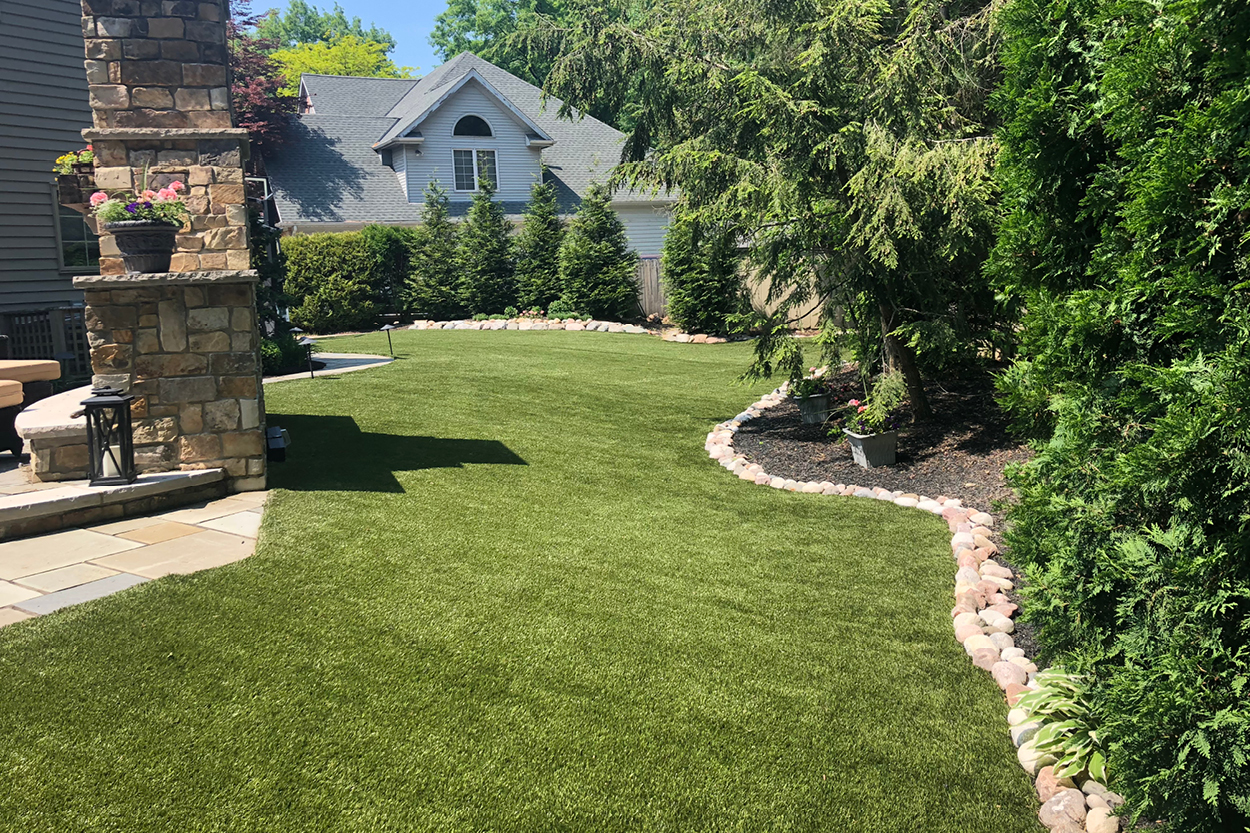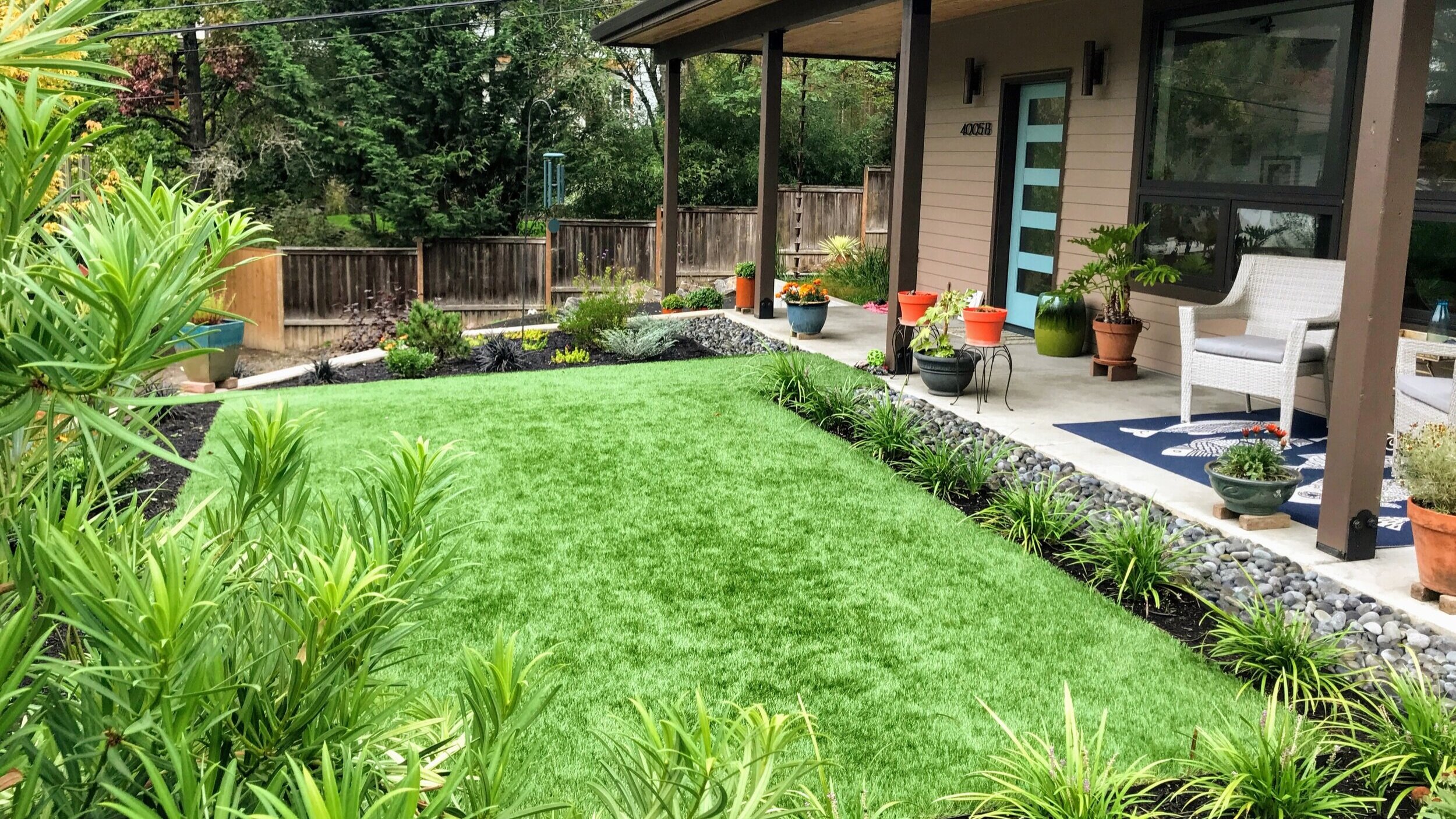Look Into the Environmental Perks of Opting for Artificial Grass Solutions
The adoption of synthetic grass remedies presents a compelling chance to resolve pressing environmental difficulties. By considerably decreasing water use and lessening the application of damaging chemicals, these choices not just advertise lasting landscape design but additionally shield neighborhood ecosystems.
Water Preservation Perks
One of the most substantial benefits of synthetic grass is its capability to save water. In contrast, artificial lawn does not require watering, substantially lowering the general need for water sources.
By eliminating the demand for routine watering, synthetic grass adds to sustainable landscape methods and helps reduce the ecological impact of too much water intake. Moreover, the preservation of water reaches the reduction of overflow, which can lead to soil disintegration and river pollution.
In addition, the installation of fabricated turf enables property owners and municipalities to assign water sources extra efficiently, focusing on necessary usages such as drinking water and agriculture. The change towards man-made lawn not just advertises accountable water use but likewise lines up with wider ecological goals focused on protecting all-natural sources.
As communities increasingly prioritize sustainability, the water conservation benefits of synthetic grass provide an engaging situation for its adoption in domestic and commercial landscaping jobs.
Minimized Chemical Usage
The transition to synthetic grass dramatically lowers the dependence on chemical treatments frequently utilized in natural turf maintenance. Typical turf monitoring typically entails the application of fertilizers, chemicals, and herbicides to advertise development and control bugs. These chemicals can posture threats to human health and wellness, regional wildlife, and the environment, adding to dirt and water contamination.
In comparison, synthetic turf removes the requirement for these harmful compounds. By reducing the release of synthetic substances into the environment, synthetic lawn promotes healthier dirt and water systems.
Furthermore, the lack of chemical drainage related to synthetic grass installations helps safeguard regional waterways from contamination, supporting marine life and maintaining biodiversity. Phoenix turf companies. As communities increasingly focus on lasting methods, deciding for artificial grass offers a practical remedy that straightens with environmental conservation objectives. With this change, home proprietors can appreciate rich green spaces without compromising ecological health and wellness, paving the method for a much more sustainable future
Lower Carbon Footprint

Moreover, the installment of artificial turf can result in significant water conservation. All-natural lawns call for considerable amounts of water for irrigation, which not only contributes to the carbon impact connected with water removal and therapy yet additionally stress local water resources. In contrast, synthetic turf needs very little maintenance, needing no watering, consequently dramatically lowering water usage and its connected energy expenses.
Furthermore, the durability of synthetic grass contributes to its reduced carbon impact. With a lifespan of approximately 15 years or even more, the demand for regular substitutes is decreased, leading to much less waste and lower energy intake in production and taking care of traditional grass choices. On the whole, synthetic grass presents a lasting alternative for ecologically conscious landscape design.
Habitat Preservation
Environment conservation is a vital factor to consider in the debate over landscape design options, particularly when contrasting synthetic grass to natural lawn. Natural grass lawns frequently call for considerable maintenance, consisting of making use of pesticides, plant foods, and herbicides, which can detrimentally affect neighborhood environments. These chemicals can leach into the soil and rivers, harming indigenous flora and fauna and interrupting neighborhood habitats.
Man-made grass gets rid of the demand for harmful chemicals, consequently securing neighboring wild animals and keeping the honesty of surrounding ecosystems. The installation of artificial turf can lead to the conversion of former lawn locations into more biodiverse landscapes, such as pollinator link gardens or native plant areas, which can support local wild animals.
Inevitably, the change to synthetic grass not only preserves water and lowers upkeep initiatives yet additionally cultivates a much more harmonious relationship between human activities and the natural surroundings, promoting environment conservation at the same time.
Long-Term Sustainability
Long-lasting sustainability is a critical variable in examining the benefits of synthetic grass over traditional yard yards. One of the most significant advantages of man-made turf is its resilience; it can last as much as 15-20 years with minimal upkeep, whereas natural yard needs regular reseeding and replacement. This long life decreases the need for consistent sources, such as water, fertilizers, and pesticides, which are important for keeping a healthy and balanced turf yard.
Furthermore, synthetic grass adds to a reduction in carbon emissions connected with yard treatment tools. Traditional yards frequently require gas-powered lawn mowers, leaners, and blowers, every one of which add to air contamination. Phoenix turf companies. In contrast, synthetic grass gets rid of the need for such devices, advertising a cleaner environment
Furthermore, the production of man-made lawn progressively makes use of recycled products, boosting its sustainability profile. As makers take on green practices, the environmental impact of synthetic grass continues to reduce.

Verdict
The fostering of synthetic grass services presents considerable environmental benefits, consisting of considerable water navigate here conservation, minimized reliance on unsafe chemicals, and a reduced carbon impact. Artificial grass help in maintaining all-natural environments by reducing land disruption and advertising long-lasting sustainability with the use of long lasting products. Collectively, these aspects emphasize the possibility of man-made lawn to contribute positively to ecological wellness and offer a feasible choice to conventional landscape design techniques in a significantly resource-conscious world.
In contrast, fabricated grass does not need watering, dramatically decreasing the overall demand for water resources. By lessening the release of synthetic compounds right into the ecological community, fabricated lawn promotes healthier dirt and water systems.
Additionally, the setup of man-made lawn can result best site in significant water preservation. In contrast, artificial turf needs very little maintenance, requiring no watering, thus dramatically lowering water use and its linked power expenses.
